YouTube has transformed from a simple video-sharing platform into a powerful ecosystem where creators can build careers and earn substantial income. Today’s YouTube creators are self-made entrepreneurs, captivating audiences worldwide with videos that entertain, educate, and inspire. If you’re looking to monetize your YouTube presence, numerous strategies are available, ranging from leveraging YouTube’s built-in monetization features to exploring external avenues.
This guide will explore effective methods for Making Money On Youtube, providing a comprehensive overview for both aspiring and established creators aiming to maximize their earnings. We’ll delve into diverse strategies, from joining the YouTube Partner Program to selling merchandise and beyond, offering actionable insights to help you succeed on the platform.
First: Joining the YouTube Partner Program (YPP)
The cornerstone of YouTube monetization for many creators is the YouTube Partner Program. Becoming a member unlocks a suite of tools designed to help you generate revenue from your content across various formats, including Shorts, livestreams, and standard videos.
YPP membership provides access to several key monetization features:
- Ad Revenue Sharing: Earn a portion of the revenue generated from ads displayed on your videos and between Shorts.
- YouTube Premium Revenue: Receive a share of revenue from YouTube Premium subscribers who watch your content.
- Fan Funding Tools: Utilize Super Chat, Super Thanks, and channel memberships to allow your audience to directly support your channel financially.
- YouTube Shopping: Offer products directly to your viewers through your channel and videos.
Beyond monetization, the YPP also grants access to valuable creator support resources and the Copyright Match tool, which aids in protecting your original content from unauthorized use.
While the YPP is a significant pathway to monetization, it’s not the only one, nor is it necessarily the most lucrative for every channel. Alternative strategies, such as directing viewers to your own online store, affiliate partnerships, or creating sponsored content, can also be highly effective. These methods will be explored in detail below.
However, it’s important to note that YPP membership often simplifies or even enables many other monetization approaches. YouTube has distributed over $50 billion to Partner Program members in the last three years, highlighting its potential. If you meet the eligibility criteria, joining the YPP is a crucial first step for most creators.
Eligibility for the YouTube Partner Program
To qualify for the YouTube Partner Program and unlock its monetization features, your channel must meet specific requirements:
- Subscriber Count: A minimum of 1,000 subscribers.
- Watch Hours or Shorts Views: Either 4,000 valid public watch hours in the past 12 months or 10 million valid public Shorts views in the last 90 days.
It’s worth noting that some program features may be accessible with fewer subscribers and views.
Crucially, your channel must also be in good standing with YouTube’s community guidelines and adhere to all YouTube’s monetization policies. Additionally, you must reside in an eligible region.
Once you meet these criteria, you can apply for the YPP through YouTube Studio by navigating to the “Earn” tab in your channel dashboard.
1. Activate Ads on Your Videos
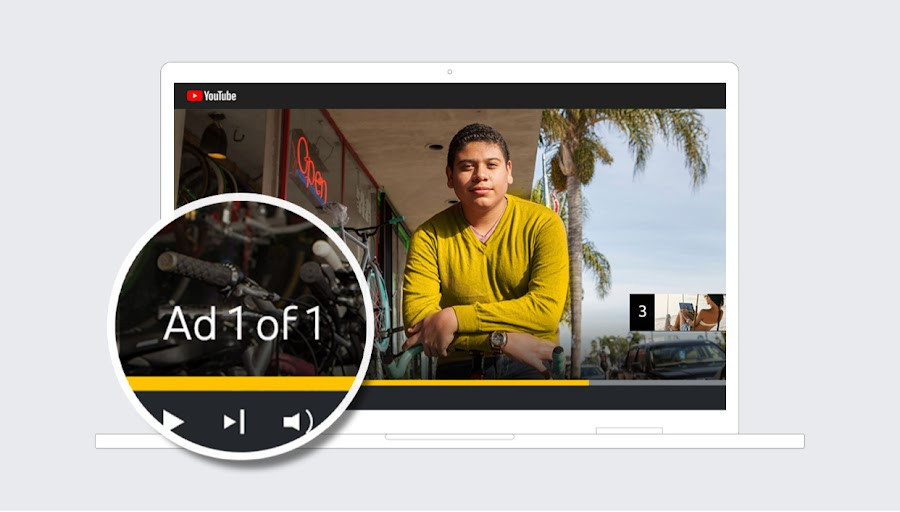 Example of an in-video YouTube ad for a bicycle brand
Example of an in-video YouTube ad for a bicycle brand
Image: An example of a bicycle brand advertisement displayed within a YouTube video.
Once you are accepted into the YouTube Partner Program, the most straightforward way to start generating income is by enabling ads on your videos. YouTube’s advertising system is largely automated, making it a relatively passive income stream.
When you enable monetization for a long-form video, YouTube automatically inserts pre-roll and post-roll ads, which may be skippable or non-skippable, before and after your content. While you don’t have direct control over the specific ads displayed, for videos exceeding eight minutes in length, you gain the option to strategically place mid-roll ads. These mid-roll ads can be inserted automatically by YouTube or manually positioned by you for optimal viewer experience and revenue generation.
To track your ad revenue, navigate to the “Revenue” tab within YouTube Studio. This section provides detailed reports on your earnings, including monthly estimated revenue specifically from videos with monetization enabled.
Beyond Ads: Diversifying Your Revenue Streams
While YouTube ad revenue offers a simple and relatively passive method to monetize your videos, relying solely on ads might not be sufficient for substantial income. To maximize your earnings, it’s generally advisable to combine ad revenue with other monetization strategies.
YouTube’s demonetization policy is perceived by some creators as overly strict, potentially leading to certain content being deemed not advertiser-friendly, thus limiting ad revenue potential. Furthermore, YouTube retains a significant portion of ad revenue – 45% for standard videos and 55% for Shorts. This revenue split underscores the importance of exploring alternative and supplementary income streams for YouTube creators.
2. Leverage Fan Funding for Direct Support
 The Patreon page of YouTube channel Wait But Why.
The Patreon page of YouTube channel Wait But Why.
Image: The Patreon page for the YouTube channel Wait But Why, showcasing fan funding in action.
For creators within the Partner Program, YouTube offers fan funding features that allow viewers to directly support their favorite channels through tips and recurring payments. These features foster a stronger connection with your audience and provide a more direct revenue stream.
Super Chat, Super Stickers, and Super Thanks are engagement-enhancing tools that viewers can purchase during livestreams and video premieres to show their support. These purchased features highlight the fan’s messages within the chat, increasing visibility and recognition.
Similarly, YouTube channel memberships provide a way to offer exclusive perks and content to paying fans in exchange for recurring monthly subscriptions. You can create up to six membership tiers, each offering increasing levels of benefits, such as:
- Custom Badges and Emojis: Members receive unique channel badges and custom emojis to use in live chats and comments, allowing them to stand out and express their support.
- Exclusive Content: Offer members-only community posts, Shorts, and videos, providing premium content not available to the general public.
- Early Access: Grant members exclusive first-viewing rights to your new videos, fostering a sense of exclusivity and reward for their support.
- Members-Only Live Chats and Livestreams: Host exclusive live interactions for members, creating a more intimate and engaging community experience.
- Member Recognition Shelf: Feature member avatars prominently at the top of your channel page, publicly acknowledging and appreciating their support.
Exploring External Fan Funding Platforms
Beyond YouTube’s native features, platforms like Patreon offer alternative avenues for fan funding. Patreon is a well-established platform where creators can offer exclusive content, early access, and other perks in exchange for recurring donations from their fans.
While utilizing platforms like Patreon may require investing time in creating additional content specifically for donors, they provide a familiar and trusted method for your audience to provide ongoing financial support outside of the YouTube ecosystem.
Alternatives to Patreon for fan funding include:
- Buy Me a Coffee: A simpler platform for one-time or recurring donations.
- Ko-fi: Similar to Buy Me a Coffee, offering various ways for fans to support creators.
3. Sell Products and Merchandise Directly to Your Audience
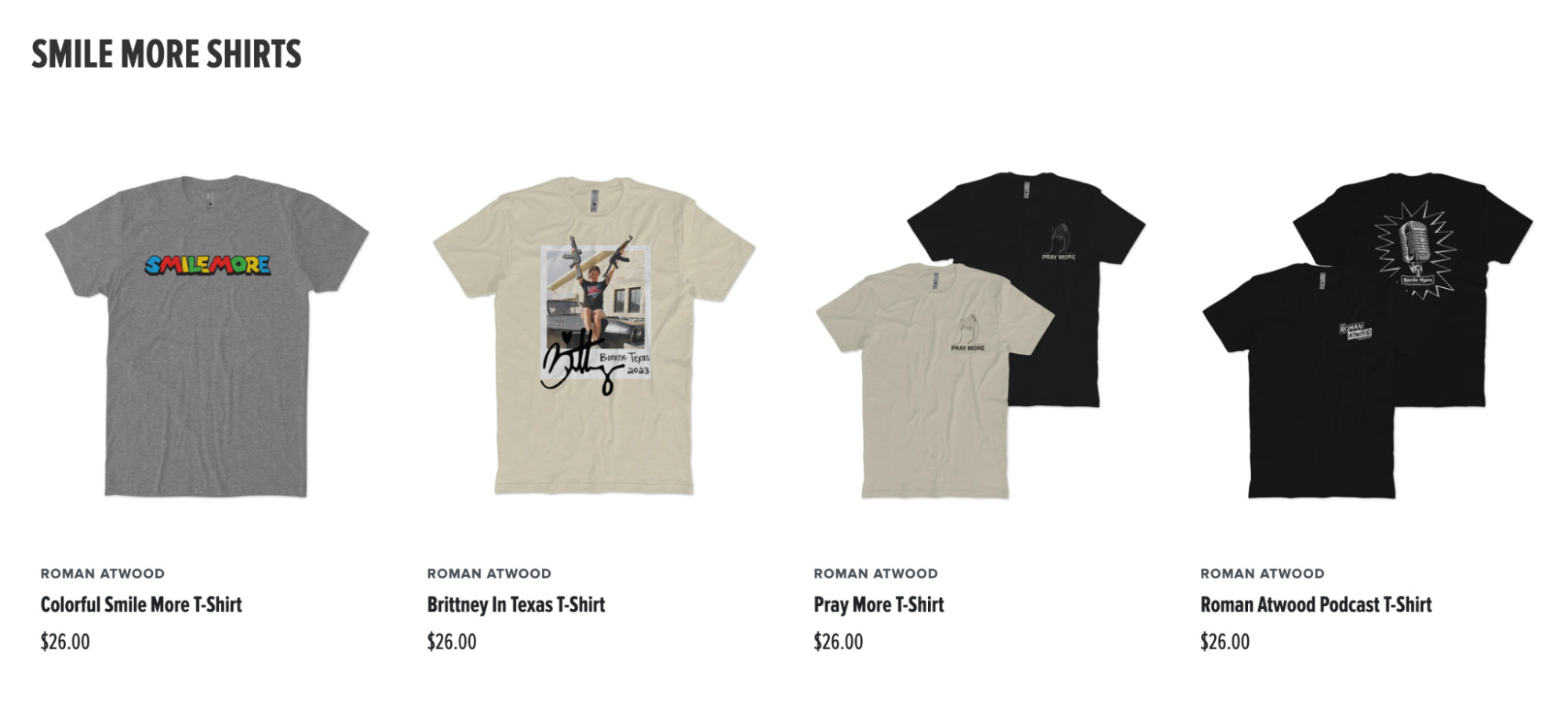 t-shirts on a website category page
t-shirts on a website category page
Image: T-shirts displayed on a website category page, illustrating merchandise sales.
Many successful YouTube creators, like Roman Atwood with his Smile More brand, leverage merchandise sales as a significant revenue stream. YouTube Shopping provides integrated tools to facilitate direct sales to your audience directly from your channel.
With YouTube Shopping, you can:
- Open a Storefront on Your Channel: Create a dedicated shop tab directly on your YouTube channel to showcase your merchandise.
- Connect Your Online Store: Integrate your existing online store (e.g., Shopify) to display your products directly within and around your videos.
- Tag Products in Videos: Tag your own products or products from partner brands directly within your videos, making them easily discoverable and purchasable by viewers.
YouTube internal data indicates that over 160,000 creators are already utilizing YouTube Shopping to sell products on their platform, highlighting its growing popularity and effectiveness.
Common merchandise options for creators include branded swag such as tote bags, snapbacks, t-shirts, and other items. You can also promote products from brands you review or partner with, expanding your product offerings.
Selling branded merchandise is more accessible than ever thanks to print-on-demand services. These services handle production and shipping on a per-order basis, eliminating the need for upfront inventory investment and simplifying the process of selling merch.
Setting Up YouTube Shopping with Shopify
The most seamless way to implement YouTube Shopping is by connecting your Shopify store to your YouTube channel. This integration automatically synchronizes your product listings, enabling customers to easily browse and purchase directly on YouTube or navigate to your store for a more comprehensive shopping experience.
If you don’t have an existing online store, you can easily create one with Shopify. Start with a free trial to explore the platform and set up your store.
4. Collaborate with Brands as an Influencer
Brands are increasingly recognizing the power of influencer marketing and are allocating significant advertising budgets to creators who have cultivated engaged audiences. This trend presents a valuable opportunity for YouTube creators to secure brand sponsorships and generate revenue by promoting products to their viewers.
As a creator, you can negotiate deals with brands to feature their products in your videos in exchange for compensation. The key to successful brand partnerships is to ensure authenticity and transparency with your audience.
Brendan Gahan, a renowned YouTube marketing expert and influencer, suggests a starting point for determining your sponsorship fee. He recommends calculating a baseline flat fee by multiplying your average video view count by a rate of 5¢ to 15¢ per view.
Your negotiation power can vary based on factors such as your target audience demographics, the quality of your content, and the uniqueness and profitability of your niche. If your channel aligns well with a brand’s target market and values, you may be able to negotiate a more favorable deal.
When creating brand-sponsored content, prioritize transparency by clearly disclosing the partnership to your viewers. Furthermore, only endorse products that you genuinely like and believe in to maintain your audience’s trust and credibility.
5. License Your Content to Media Outlets
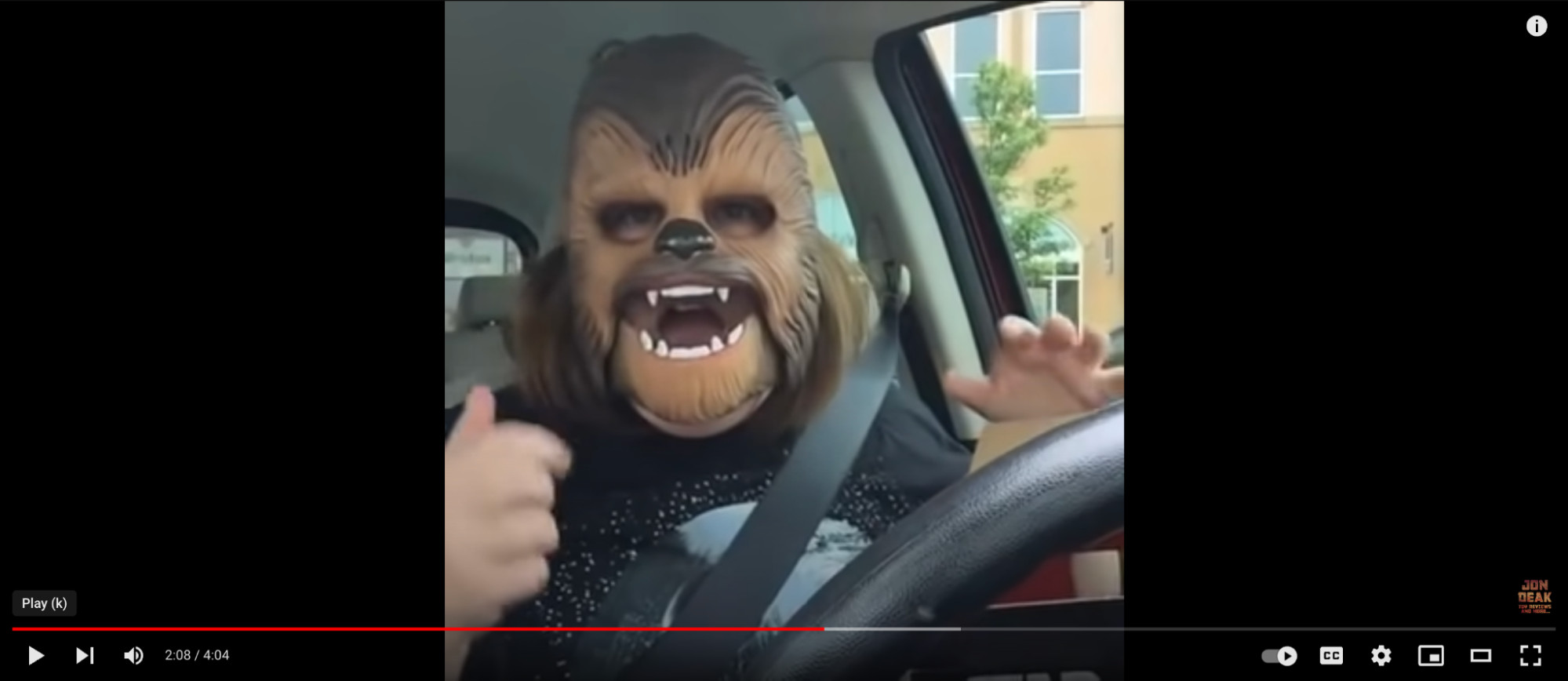 a woman in a chewbacca mask on youtube video
a woman in a chewbacca mask on youtube video
Image: A screenshot from a YouTube video featuring a woman wearing a Chewbacca mask.
If you create a viral video with broad appeal, such as the famous Chewbacca mask lady video, you have the potential to license your content to media outlets for a fee.
TV news channels, morning shows, online news platforms, and other creators often seek to license viral videos for use in their programming or content. If your video gains significant traction, you may receive inquiries regarding licensing rights.
Alternatively, you can proactively list your videos on content marketplaces like Jukin Licensing. These platforms specialize in connecting content creators with media buyers, increasing the visibility of your viral videos and facilitating licensing opportunities.
6. Crowdfund Your Creative Projects
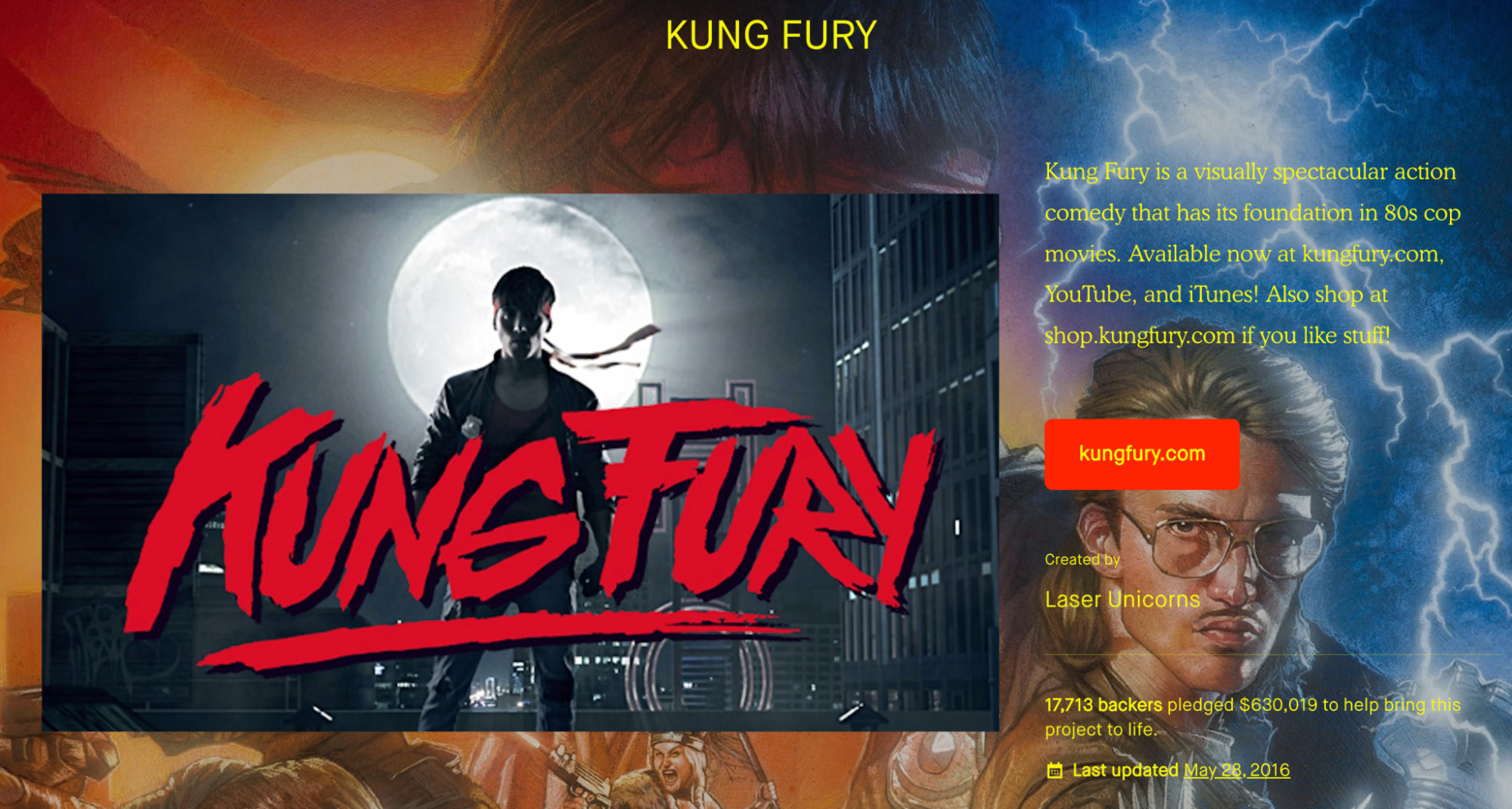 a kickstart campaign for Kung Fury movie with preview
a kickstart campaign for Kung Fury movie with preview
Image: A Kickstarter campaign page for the movie Kung Fury, showcasing crowdfunding for creative projects.
Crowdfunding offers a powerful way to secure funding for your creative projects directly from your audience. Platforms like Kickstarter and Indiegogo enable you to solicit contributions from your community to bring your ideas to life.
Whether you need funds for upgraded equipment, hiring actors, covering production expenses, or any other project-related costs, crowdfunding can be a viable solution if you can present a compelling vision to your audience.
Successful crowdfunding campaigns often leverage engaging sneak peeks or trailers to generate excitement and encourage contributions. Consider creating a video that clearly explains your project, showcases your vision, and provides a taste of what you plan to create.
Popular crowdfunding sites frequently used by YouTubers include:
- Kickstarter: Known for funding creative projects across various categories.
- Indiegogo: Offers flexible funding options and is popular for tech and innovation projects.
- GoFundMe: Primarily used for personal causes and charitable projects but can also be used for creative endeavors.
7. Implement Affiliate Marketing Strategies
Affiliate marketing is a performance-based monetization strategy where you earn a commission by promoting products or services from other brands within your videos. As a YouTube creator, you can become an affiliate marketer by creating content that naturally incorporates and promotes relevant products to your viewers.
Getting Started with Affiliate Marketing
To begin affiliate marketing, identify affiliate programs that align with your channel’s niche and are likely to resonate with your audience. The more relevant the products you promote are to your content, the higher your chances of success.
Once you’ve joined relevant affiliate programs, you can add affiliate links to your video descriptions and end screens. When viewers click on these links and make a purchase, you earn a commission.
Affiliate marketing is particularly effective if your channel includes product reviews, tutorials, or recommendations. Since brands only pay commissions on actual sales, it’s generally easy to get started with affiliate programs. However, transparency is crucial – always clearly disclose your affiliate relationships to your audience.
YouTube simplifies affiliate marketing through its Shopping affiliate program. This program helps you discover relevant products to promote and provides commission information. Once you find a product you want to feature, you can easily tag it directly within your videos using YouTube Shopping features.
While any creator can include affiliate links in their YouTube content, utilizing the official YouTube Shopping affiliate program requires YPP membership and meeting YouTube’s eligibility criteria.
Recruiting Affiliates for Your Own Products
Conversely, if you have your own product line, consider establishing your own affiliate program and recruiting other YouTubers to promote your products.
Eligible Shopify merchants can easily add their products to the YouTube Shopping affiliate program, making them discoverable for creators to promote in their videos. By syncing your product catalog through the Shopify YouTube app, you can set commission rates and manage your affiliate program effectively.
Understanding YouTube Earnings: Key Metrics
How Many Views Are Needed to Make Money on YouTube?
The number of views alone does not directly translate to revenue. While a high view count is beneficial, engagement with ads is the primary factor determining ad revenue. According to data from Influencer Marketing Hub, the average YouTube channel earns approximately 1.8¢ per view, equating to $18 per 1,000 views.
However, revenue is generated only when viewers interact with ads by either clicking on them or watching the video ad in its entirety (for 10, 15, or 30 seconds, depending on the ad format). Therefore, a video with thousands of views but low ad engagement may not generate significant revenue.
Annual Earnings of YouTubers: A Range of Possibilities
Top-tier YouTubers, such as MrBeast, can earn tens of millions of dollars annually through their channels. While these figures represent the high end of the spectrum, it’s important to recognize that creators with smaller channels can also earn a sustainable living on YouTube.
Consider Justine Leconte, a YouTuber with one million subscribers who provides fashion advice. Based on her total video views and ad revenue alone, her estimated annual earnings are around $259,304, averaging approximately $979 per video, according to Influencer Marketing Hub’s YouTube Money Calculator.
These figures are estimates, and actual earnings can vary based on various factors, including monetization strategies employed, audience demographics, and ad engagement rates. However, these examples illustrate the potential for creators to build viable income streams on YouTube, even without reaching mega-star status.
Maximizing YouTube Revenue: Engagement, Niche, and Diversification
YouTube monetization is achievable even without a massive subscriber base. Your earning potential is influenced by audience engagement, your channel’s niche, and the breadth of revenue streams you explore.
While lists of top YouTube earners may suggest that income primarily derives directly from YouTube ad revenue, in reality, many top channels have diversified their income through merchandise lines and other ventures. Building a loyal audience is the crucial first step, providing a foundation for launching diverse revenue streams. Understanding your target audience is paramount for any monetization strategy.
Tips for Effective Selling on YouTube
Many YouTube monetization methods involve promoting products or services. To maintain audience trust and engagement, it’s essential to integrate promotional content authentically and avoid alienating your viewers.
While the concern of “selling out” is valid, neglecting monetization opportunities can hinder your ability to sustain your creative endeavors. Finding a balance between promotion and content integrity is key.
Here are practical tips for incorporating promotional content effectively:
Understand Your YouTube Audience Demographics
A deep understanding of your audience is crucial for effective monetization. Knowing your audience allows you to tailor your content and promotions to their interests and preferences.
For niche channels, audience demographics are particularly valuable for attracting brand partnerships. Pay close attention to:
- Audience Gender: Identify if your audience skews towards a particular gender.
- Age Range: Determine the primary age group of your viewers.
- Geographic Location: Understand the countries or cities where your videos are most watched.
- Watch Time and Engagement: Analyze audience retention and engagement metrics.
This demographic data, accessible through YouTube Analytics, provides valuable insights for optimizing your monetization strategies and attracting relevant brand collaborations.
Utilize Info Cards Strategically
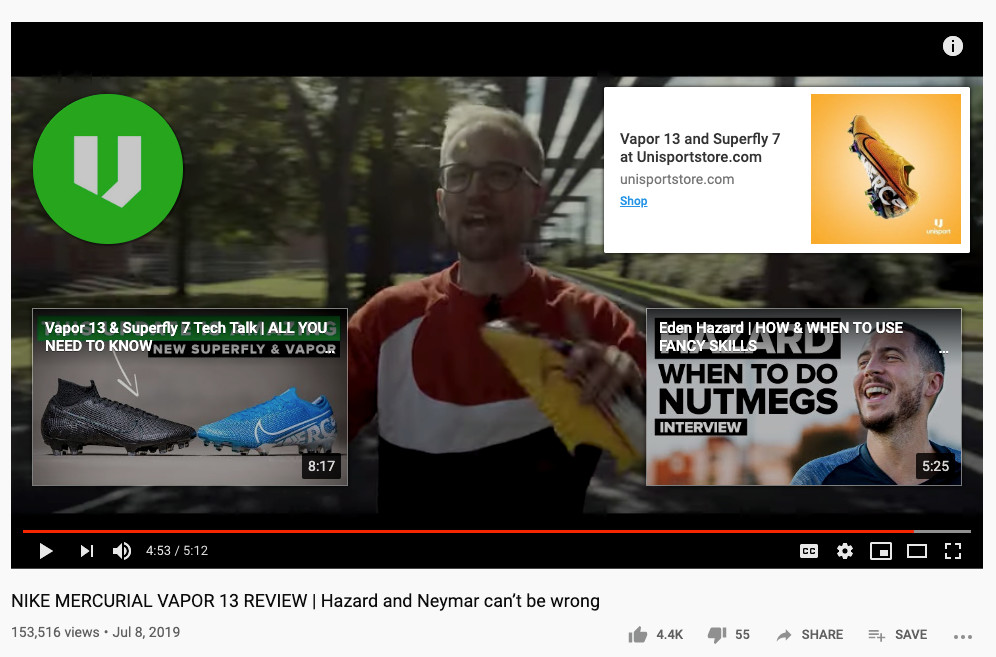 a youtube video with two info cards and an ad for shoes
a youtube video with two info cards and an ad for shoes
Image: A YouTube video displaying two info cards and an ad for shoes.
Info cards (formerly YouTube Cards) are interactive pop-up elements that can effectively capture viewer attention and drive engagement with promotions.
Whether promoting a brand partnership or your own products, strategically place info cards at relevant moments within your videos using free video editing software. Timing is crucial – insert info cards when they are most contextually relevant and least disruptive to the viewing experience to maximize their impact.
Include Links in Video Descriptions
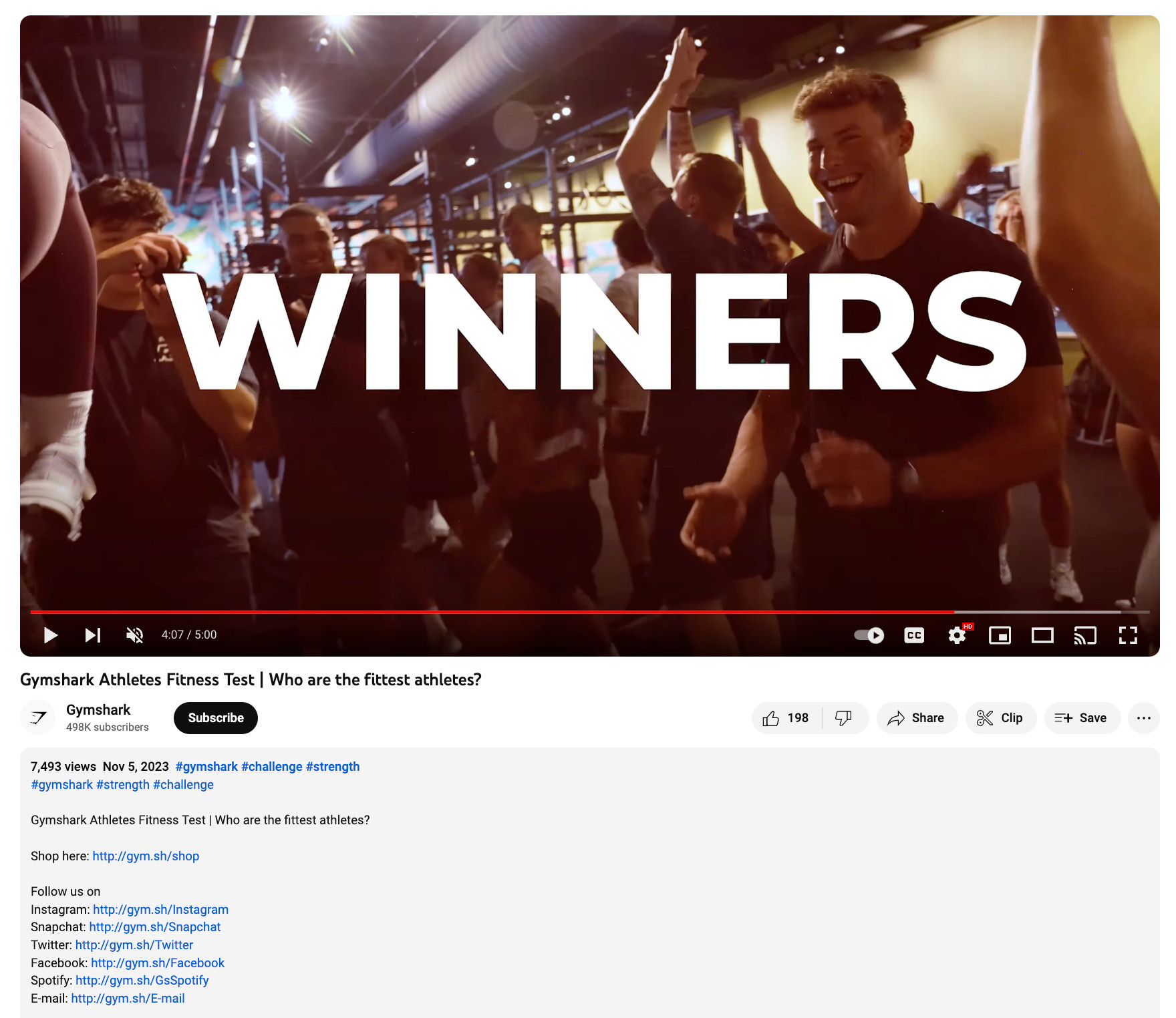 Gymshark youtube video with links to follow the brand on social media in description
Gymshark youtube video with links to follow the brand on social media in description
Image: A Gymshark YouTube video description with links to the brand’s social media profiles.
Video descriptions provide a valuable space to include links to your online store, Patreon page, Kickstarter campaign, affiliate product links, or other revenue-generating platforms. Make it easy for viewers to access these resources by placing clear and concise links in your video descriptions.
Promote Your Offers Across Platforms
Maximize the reach of your promotional efforts by leveraging all available distribution channels. Don’t limit your promotion solely to YouTube.
Share information about new campaigns, discounts, or product launches on platforms like X (formerly Twitter), Facebook, Instagram, and any other social media profiles you maintain. Cross-promotion across multiple platforms increases visibility and amplifies your message. Expanding your social media presence beyond YouTube with a robust social media marketing strategy is highly recommended.
The Expanding Creator Economy
While monetary gain may not be the primary motivation for all creators, effective monetization strategies are essential for transforming passion into a sustainable career. YouTube provides a platform for creators to be rewarded for their dedication, hard work, and creative experimentation in navigating the YouTube algorithm and building engaged communities.
The journey of creators like MrBeast, who started making videos at age 13 and dedicated years to refining his content, exemplifies the potential for long-term success on YouTube.
For businesses, audience building and attention retention are significant challenges. YouTube creators have already mastered this crucial aspect. By leveraging the strategies outlined in this guide, you can unlock the potential of YouTube monetization and build a thriving creator career.
Shopify empowers creators and businesses of all sizes, from individual entrepreneurs to global brands. Explore Shopify plans and pricing to find the right solution for your online business needs.
How to Make Money on YouTube FAQ
How many views do you need on YouTube to make money?
The number of views is not the direct determinant of YouTube earnings. Revenue is generated when viewers engage with ads, either by clicking or watching them completely. While views contribute to visibility, ad engagement is the key factor for monetization.
How much do you get paid per 1,000 views on YouTube?
On average, YouTube channels earn around $18 per 1,000 views, which translates to approximately 1.8¢ per view, according to data from Influencer Marketing Hub. However, this is an average, and actual earnings can vary.
Do you get paid for uploading videos on YouTube?
YouTube does not directly pay creators for simply uploading videos. To monetize your content, you need to enable monetization in your YouTube account settings and join the YouTube Partner Program. Alternatively, you can have your videos included in YouTube Premium for potential revenue sharing.
How do YouTubers make money on YouTube?
YouTubers utilize various monetization methods, including:
- Joining YouTube’s Partner Program
- Selling products or merchandise
- Crowdfunding
- Fan funding
- Licensing content to media outlets
- Collaborating with brands as influencers
- Becoming affiliate marketers
How can you make money on YouTube without making videos?
One way to earn from YouTube without creating videos is by partnering with creators to promote your products through YouTube’s affiliate marketing program. Shopify merchants can easily add their products to this program, enabling creators to tag products in their videos and facilitate sales.
